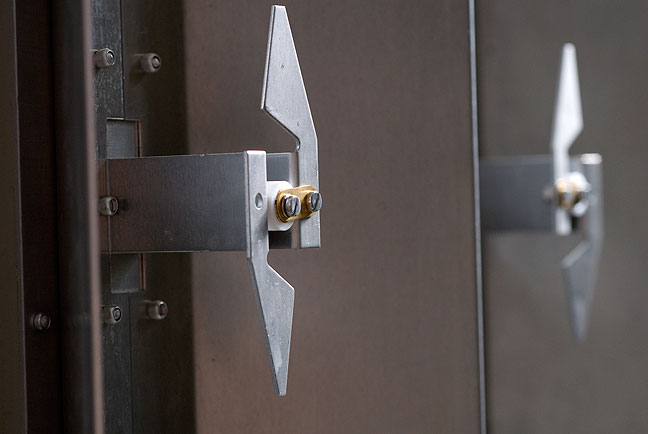
Last year I plucked a couple of abandoned cellular telephone company antennas off a roof of a downtown building after the owner said I could have them. I was eager to take apart the omnidirectional one, about which I posted last October.
Today I had a few extra minutes, so I decided to take apart the other one, a directional panel antenna. This type of antenna has almost completely replaced the omni in the cell phone and data world, since directional antennas allow much more efficient reuse of frequencies.
I asked myself, “Which of my readers would like to see what’s inside these things?” and the answer was probably none. But what the heck. I get to tear apart something, so I’m going in and I’m going in full throttle.
There is surprisingly little information about this antenna on the web, I suppose because there is little need to advertise or market it, since no consumer wants one, and the cell companies probably have technicians buy them in bulk or custom order them.
It took a considerable amount of effort to get this thing apart, since it was put together to last for decades on a tower in the rain, snow, heat, and cold, potentially in the middle of nowhere. The radome, the fiberglass front cover of the antenna, was attached with rivets, then sealed with thick, weatherproof glue. I was forced to pry and break it with a Vice-Grip® tool.
After maybe an hour of cracking and breaking and cursing, I had the radome off and saw how this antenna is built. It’s a 24-element phased and stacked array. The elements are three-inch bowtie dipoles made of stamped aluminum. I assume they used a bowtie shape instead of a classic wire “stick” dipole to increase the bandwidth, which the label on the back of the antenna says is 1.8-2.0 Ghz.
The condition of the radome suggests it had been on the building for some years, which may be another explanation why as to why there is so little information on the net about it.
My readers might not realize that it is devices like this that make modern communications fundamentally possible.

in reality, modern telecom was created using vacuum tubes and odd bits of metal and wire. It makes you wonder why the director thought that Spock’s “i am endeavoring ma’am to construct a mnemonic circuit using stone knives and bearskins” needed the musical clue to let the audience know that he was joking. We realized as teens that Spock’s line was more appropriate to the situation than it was sarcasm.
I see these things on towers across the country. Most people think cellular phone and data service is magic, or that the towers themselves are the antennas.
I didn’t even touch on the subject of feed line; this antenna was served by a four-foot section of half-inch hardline. That’s expensive stuff.
But it is at some point fundamentally magic, isn’t it? :)